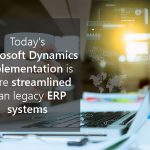Today, the digital landscape is alive with the sound of digital files migrating to the cloud. By no means, though, does this transitioning to cloud computing equate to a stampede to move all applications, files and documents in one fell swoop to a hosting service.
What’s needed, of course, is a strategy. Given the abundance of legacy applications still residing within on-premise architecture, the process must start by understanding what exactly defines a “legacy” program.
Surprisingly, what is a legacy program to one business is not in another environment. Both, of course, must find that “intersection” with the cloud. Commonly, it is referenced to:
“…mainframe (technologies like CICS, VSAM and COBOL), but in reality there’s way more to it. At its most generic, legacy refers to any technology that is both difficult to replace and would be implemented using different technologies if deployed today. So anytime you’re supporting technology (be it hardware, applications, middleware, programming languages, etc.) that predates current technology standards, that technology is legacy.”
When establishing a data migration strategy, and opting for using some legacy programs, Gartner emphasizes the importance of updating, modifying or “extending existing code base(s).” As such, Gartner categorizes this process as the Revise step in its five-step overview entitled, “Cloud applications: Five migration tips…”
Companies moving to software as a service (SaaS) for their CRM/ERP platform can make the implementation and deployment easier if they partner with a Microsoft vendor like Technology Management Concepts (TCM), who can lead stakeholders through all the necessary steps.
For example, if you are presently using NAV 2009, this might be an excellent time to upgrade to Dynamics NAV 2015; this, because mainstream support by Microsoft ends on January 13th for Nav 2009.
Contact us to let our team help you get the process started.
{{cta(’52a6f94c-7ea9-4a8d-bf2d-9432e3c12709′)}}





